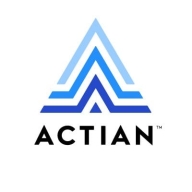

Actian Ingres and Snowflake compete in the data management category, serving distinct needs. Snowflake holds a competitive edge due to its cloud-native capabilities, offering scalability and modern analytics, while Actian Ingres is valued for robust legacy system integration.
Features: Actian Ingres offers high-capacity data handling, compatibility with various applications, and supports complex transactional and analytical workloads. Snowflake provides a cloud-native architecture enabling seamless data sharing, elastic compute scaling, and multi-cloud support, setting it apart in flexibility and future-proofing.
Ease of Deployment and Customer Service: Snowflake's quick cloud deployment and responsive customer support appeal to companies seeking rapid implementation and efficient issue resolution. Actian Ingres, with on-premise deployment, might require more customization and maintenance, leading to a more complex setup.
Pricing and ROI: Actian Ingres involves lower upfront setup costs, which is attractive for businesses with limited budgets. Snowflake's pay-as-you-go model often delivers better ROI through scalable performance, with potential cost savings over time justifying its premium costs.
| Product | Market Share (%) |
|---|---|
| Snowflake | 10.4% |
| Actian Ingres | 1.8% |
| Other | 87.8% |

| Company Size | Count |
|---|---|
| Small Business | 29 |
| Midsize Enterprise | 20 |
| Large Enterprise | 57 |
Actian’s Ingres is a leading, enterprise-grade database management system designed to reduce IT costs and time-to-value, while delivering the strength and features expected from an enterprise-class database. Ingres 10.2 is the latest version of the database, containing enhancements that will make it easier to internationalize customer applications. Along with improved performance and reduced configuration overhead, users can take their first steps into big data analytics with the new Window functions.
Snowflake provides a modern data warehousing solution with features designed for seamless integration, scalability, and consumption-based pricing. It handles large datasets efficiently, making it a market leader for businesses migrating to the cloud.
Snowflake offers a flexible architecture that separates storage and compute resources, supporting efficient ETL jobs. Known for scalability and ease of use, it features built-in time zone conversion and robust data sharing capabilities. Its enhanced security, performance, and ability to handle semi-structured data are notable. Users suggest improvements in UI, pricing, on-premises integration, and data science functions, while calling for better transaction performance and machine learning capabilities. Users benefit from effective SQL querying, real-time analytics, and sharing options, supporting comprehensive data analysis with tools like Tableau and Power BI.
What are Snowflake's Key Features?
What Benefits Should You Look for?
In industries like finance, healthcare, and retail, Snowflake's flexible data warehousing and analytics capabilities facilitate cloud migration, streamline data storage, and allow organizations to consolidate data from multiple sources for advanced insights and AI-driven strategies. Its integration with analytics tools supports comprehensive data analysis and reporting tasks.
We monitor all Data Warehouse reviews to prevent fraudulent reviews and keep review quality high. We do not post reviews by company employees or direct competitors. We validate each review for authenticity via cross-reference with LinkedIn, and personal follow-up with the reviewer when necessary.